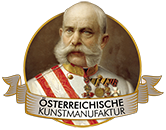From the middle of the 19th century, the book market changed significantly with the introduction of technical innovations. The rapid press made it possible to produce print runs that revolutionized people's reading habits in the long term. New printing techniques and the introduction of color printing brought word and image together again. Book illustration developed into an independent art form. Literature responded to the emergence of the mass market with new forms, such as the short story and the serial novel. Walter Crane first established himself as an illustrator on this mass market. His illustrations for children's book series, which were marketed in Great Britain as "Six Penny Books" or "ToyBooks," reached circulation figures of 50,000 copies. Crane's endeavor lay in the high quality craftsmanship and artistry of the mass-produced products.
Crane's educational path was unconventional. After leaving school after a few classes because it "got on his nerves," he was home-schooled by his father. At the age of 13, he took up an apprenticeship as an illustrator. The craft foundation shaped his approach to art. Crane is considered one of the outstanding representatives of the British Arts and Craft movement, which sought to reconcile arts and crafts with mass production. In this way, Crane also became a pioneer of Art Nouveau. Instead of returning to traditional art forms that characterized historicism, the Arts and Craft movement focused on the development of an independent modern style.
Crane was committed to a new arts education for broad segments of the population and published related basic educational literature. Crane not only created illustrations for books, but was also active in design. Here he created utilitarian items such as wallpaper, tiles, glassware, and patterns for tablecloths. The emphasis of the Arts and Craft movement was on reconciling art and everyday life in an industrialized society. Crane's greatest influence, however, was through his book illustrations.
×





.jpg)
.jpg)
.jpg)
.jpg)
.jpg)
.jpg)
.jpg)
.jpg)
.jpg)
.jpg)
.jpg)
.jpg)
.jpg)
.jpg)
.jpg)
.jpg)
.jpg)
.jpg)
_-_(MeisterDrucke-1059083).jpg)
_-_(MeisterDrucke-1059083).jpg)
.jpg)
.jpg)
.jpg)
.jpg)
.jpg)
.jpg)
.jpg)
.jpg)
.jpg)
.jpg)
.jpg)
.jpg)
.jpg)
.jpg)
.jpg)
.jpg)
.jpg)
.jpg)
.jpg)
.jpg)
.jpg)
.jpg)
.jpg)
.jpg)
.jpg)
.jpg)
.jpg)
.jpg)
.jpg)
.jpg)
 - (MeisterDrucke-60219).jpg)
 - (MeisterDrucke-60219).jpg)
.jpg)
.jpg)
.jpg)
.jpg)
.jpg)
.jpg)
.jpg)
.jpg)
.jpg)
.jpg)
.jpg)
.jpg)
.jpg)
.jpg)
.jpg)
.jpg)
.jpg)
.jpg)
.jpg)
.jpg)
.jpg)
.jpg)
.jpg)
.jpg)
.jpg)
.jpg)
.jpg)
.jpg)
_-_(MeisterDrucke-1060043).jpg)
_-_(MeisterDrucke-1060043).jpg)
.jpg)
.jpg)
 - (MeisterDrucke-259736).jpg)
 - (MeisterDrucke-259736).jpg)
.jpg)
.jpg)
.jpg)
.jpg)
.jpg)
.jpg)
.jpg)
.jpg)
_by_-_(MeisterDrucke-1453943).jpg)
_by_-_(MeisterDrucke-1453943).jpg)
.jpg)
.jpg)
.jpg)
.jpg)
.jpg)
.jpg)
 - (MeisterDrucke-146450).jpg)
 - (MeisterDrucke-146450).jpg)
.jpg)
.jpg)
_-_(MeisterDrucke-1054450).jpg)
_-_(MeisterDrucke-1054450).jpg)
.jpg)
.jpg)
.jpg)
.jpg)
.jpg)
.jpg)
.jpg)
.jpg)
.jpg)
.jpg)
.jpg)
.jpg)
.jpg)
.jpg)
.jpg)
.jpg)
.jpg)
.jpg)
.jpg)
.jpg)
.jpg)
.jpg)
.jpg)
.jpg)
.jpg)
.jpg)
.jpg)
.jpg)
.jpg)
.jpg)
.jpg)
.jpg)
.jpg)
.jpg)
.jpg)
.jpg)
.jpg)
.jpg)
.jpg)
.jpg)
 - (MeisterDrucke-272753).jpg)
 - (MeisterDrucke-272753).jpg)
.jpg)
.jpg)
.jpg)
.jpg)
.jpg)
.jpg)
.jpg)
.jpg)
_-_(MeisterDrucke-1051451).jpg)
_-_(MeisterDrucke-1051451).jpg)
.jpg)
.jpg)
.jpg)
.jpg)
.jpg)
.jpg)
.jpg)
.jpg)
_-_(MeisterDrucke-1455967).jpg)
_-_(MeisterDrucke-1455967).jpg)
.jpg)
.jpg)
.jpg)
.jpg)
.jpg)
.jpg)
.jpg)
.jpg)
.jpg)
.jpg)
.jpg)
.jpg)
_and_the_nymphs_-_in_A_wonder_book_for_girls_and_boys_by_Wal_-_(MeisterDrucke-952693).jpg)
_and_the_nymphs_-_in_A_wonder_book_for_girls_and_boys_by_Wal_-_(MeisterDrucke-952693).jpg)
.jpg)
.jpg)
_-_(MeisterDrucke-1028556).jpg)
_-_(MeisterDrucke-1028556).jpg)
.jpg)
.jpg)
.jpg)
.jpg)
.jpg)
.jpg)
.jpg)
.jpg)
.jpg)
.jpg)
.jpg)
.jpg)






